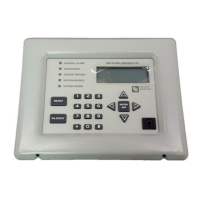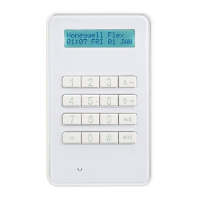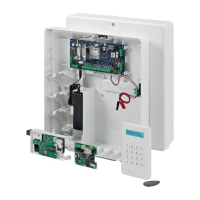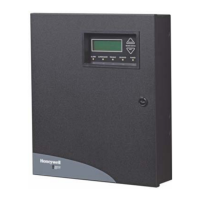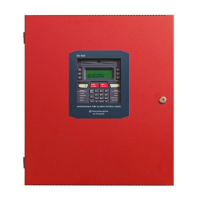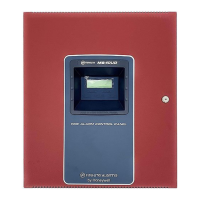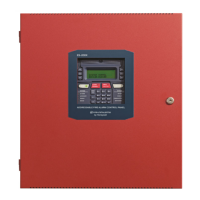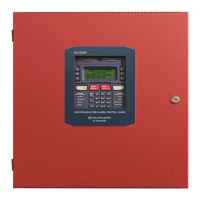IFP-75/IFP-75HV Installation/Operation Manual — P/N LS10147-001SK-E:D 06/25/2021 113
Releasing Operations System Operation
10.6.1 Multi-Site Annunciator and Multi-Site User Access
Multi-site Annunciators are unique as they can display the status and event history of all sites they are assigned to. These displays can be
especially useful in guard shacks or security centers. A multi-site display is indicated by the words “Multi-Site Display” at the top of the idle
screen.
1. The F-Macro key is disabled until a multi-site user Access Code has been entered and a specific site has been selected.
2. Multi-site Annunciator silencing rules:
• If any new troubles, supervisory, pre-alarms, or alarms are triggered in any assigned sites, Locally Silenced
annunciators will resound.
• If a multi-site annunciator is locally silenced for 4 or 24 hours depending on user selection, the locally silenced
annunciators will resound.
3. The IFP-75menu system is disabled on a multi-site annunciator. Pressing the Right or Enter keys will bring you straight into event
history for assigned sites. To get into the menu system, a multi-site user password must be entered and then a site must be selected from
the site selection menu. Once this is done you will have access to the idle screen of that site and the annunciator will temporarily act like
a single site annunciator.
4. A multi-site annunciator will sound the highest priority tone from the sites it is assigned to.
10.7 Releasing Operations
This control panel supports two types of Releasing: Double Interlock Zone and Single Interlock Zone. The Double Interlock
Zone operation requires an Interlock switch input in the System. The Single Interlock does not. An Interlock switch is typically
a dry-contact pressure switch.
Prealarm A single detector
trips in a 2-Count
zone. (2-Count
means two
detectors must
trip before an
alarm is
reported.)
Touchpad PZT beeps.
The LCD displays a screen similar to this
one.
Press down arrow to view the prealarm. A
screen similar to this one displays.
All system operations are available in this
mode.
Reset The RESET
button is pressed
followed by a
valid code or
rotation of the
key.
All LEDs are on briefly then the LCD displays
“ALARM RESET IN PROGRESS”. If the
reset process completes normally, the date
and time normal mode screen displays.
Menus are not available during the reset
process.
Silenced An alarm or
trouble condition
has been
silenced but still
exists.
To silence alarms
and troubles,
press SILENCE
followed by the
Installer or User
Code or rotate
the key.
SYSTEM SILENCE LED is on. SYSTEM
TROUBLE, SUPERVISORY or GENERAL
ALARM LED (depending on condition) is on.
The annunciator (and any notification devices
attached to the system) will be silenced.
Press down arrow to view the location of the
alarm or trouble. When the condition no longer
exists, the SYSTEM SILENCED and SYSTEM
TROUBLE LED, SUPERVISORY or GENERAL
ALARM LEDs turn off.
Operation
Mode
Occurs When System Behavior In This Mode You Can
Table 10.3 Panel Mode Operation Conditions (Continued)
FIRE:PREALARM
Det-Photo
SBUS_97 SENSOR_33
1 of 1 Info>
Pressing right or Info will
display the location macro,
date time stamp, and site/panel
if applicable.
NOTE: A multi-site display is created in Module programming in the edit properties menu for an RA-2000, RA-1000 or RA-100 See section
Section 9.2.1.
NOTE 1: These releasing functions can only be done if the System has a 5496 Intelligent Power Module ncluded.
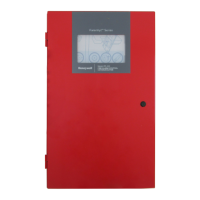
